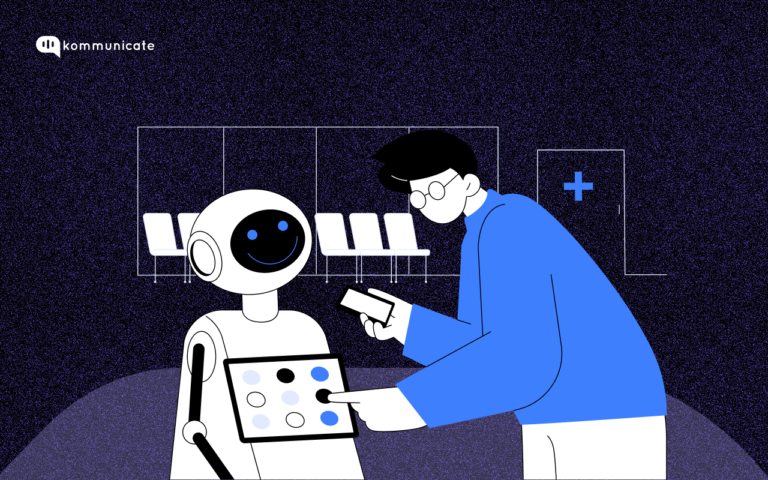Updated on January 16, 2024
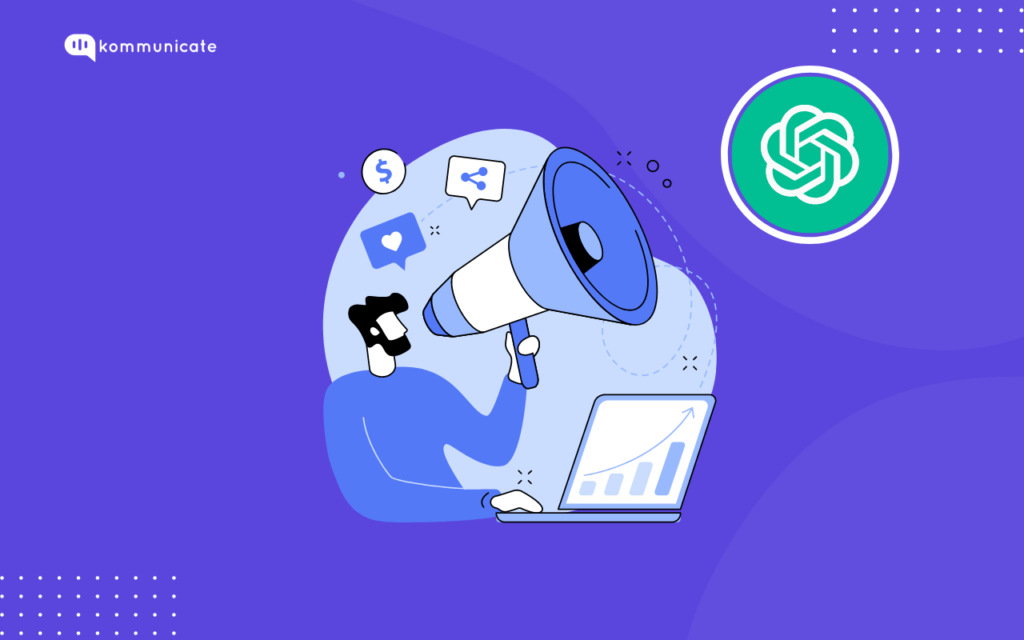
A customer interacts with you in multiple ways in the age of the Internet.
Brand strategy, therefore, is not just a custom logo design, or a name. It should rather take into consideration every aspect of your business.
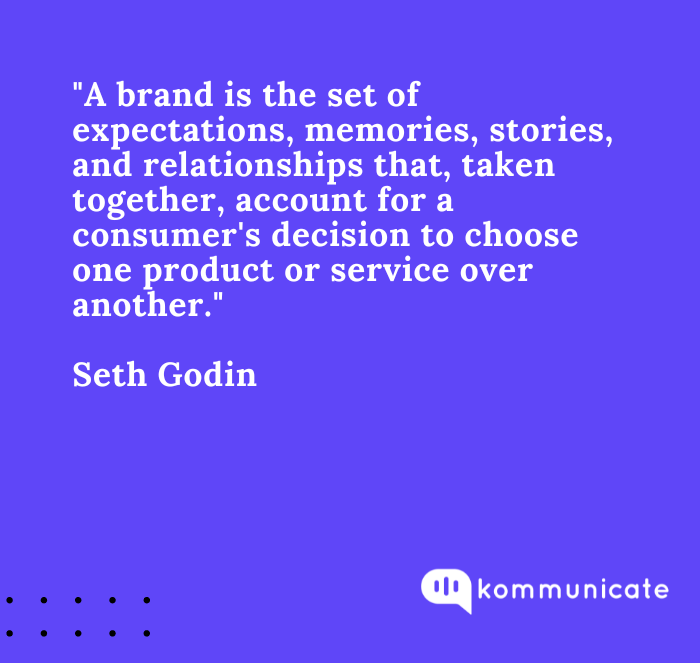
Brand alignment is the “practice of ensuring that all aspects of a company’s identity, customer experiences, values and messaging are consistent across all channels.”
This brand alignment must be cohesive and should end up reflecting a unified brand image.
A customer is bombarded with information from all the sides, and it is up to the business to create a unique brand identity which the customer’s mind can connect within seconds.
Apple has done it well. So has Tesla, Netflix and Amazon.
All of these companies have a simple vision and mission statement.
They strive to answer questions such as:
- What do we do?
- Whom do we do it for?
- How do we do it?
Once the mission is clear, it is easy to align every other aspect of the business around it.
Here are a few examples of great mission statements:
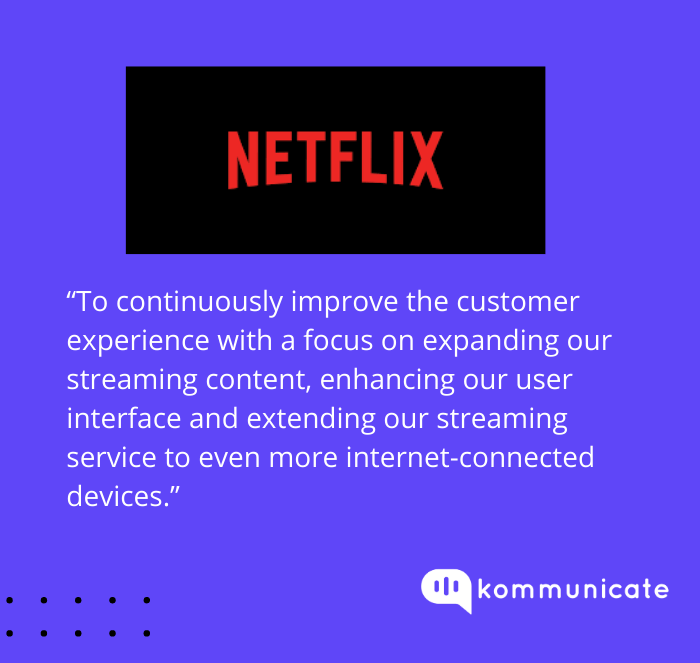
If this mission statement was a bit too wordy or complex, Tesla has an even simpler one.

Why is ensuring brand alignment important in customer interactions?
- Consistency: When you keep all your communications in alignment with your brand, you are ensuring that there is a unified customer experience. This reinforces brand recognition and trust.
- Differentiation: Every brand has a Unique Value Proposition and a distinct brand identity. Keeping your brand alignment helps a brand stand out from the competition.
- Emotional connect: Brand alignment means that there is a chance to forge a deeper emotional connection with your customer. This helps in creating a more meaningful relationship, which goes beyond the purchase of your product or service.
- Customer loyalty: When you create a unified customer experience, you are paving the way for customer loyalty and affinity. This leads to repeat business for your brand and your customers turning into your brand’s biggest advocates.
So we now know that keeping your branding activities in alignment with your values and your mission is important in customer interactions.
So how can you use technology to ensure there is a greater brand alignment?
Specifically, chatbots and Artificial Intelligence? We will now explore the answers to these questions in detail.

Role of Chatbots and AI in achieving personalized experiences
Chatbots are computer programs that simulate conversations with human beings.
They help you interact with a business on its website or mobile app. Chatbots are easy to build these days, thanks to low-code no-code platforms.
Infact, with a chatbot builder platform such as Kommunicate, you can build a bot in as less as 10 minutes.
More and more chatbots today are powered by Artificial Intelligence, and ChatGPT is a prime example of this. We will come to ChatGPT in just a bit.
But how do chatbots help drive personalized experiences?
Here are a few areas which chatbots are revolutionizing, especially when it comes to achieving a high degree of personalization.
1. Chatbots in marketing
Chatbots are being increasingly used by E-commerce websites to give customers personalized recommendations and offers. This is because chatbots can analyze troves of customer data, their purchasing and browsing history. They can then suggest a product or service that is most relevant to the customer.
Example: Lego, one of the most popular toy brands in the world, created Ralph the chatbot for its website to help users navigate its site faster. The chatbot was a massive success, and Ralph today is a central part of Lego’s website experience.
Check out this video that Lego did to introduce Ralph.
2. Chatbots in Sales
Sales teams can use chatbots to gauge valuable insights about a particular customer’s needs and preferences. How does a chatbot do it? A well designed chatbot is a customer’s first point of contact with a business, and thus, a treasure trove of customer information. This information can be used by sales teams to tailor their approach to different customers. Providing a high level of personalization also increases the likelihood of closing a sale.
Example: Gearbunch is an American clothing retailer which offers clothing with unique patterns, famous for their range of women’s leggings. On their Facebook page, Gearbunch introduced Betty the bot to assist in sales. Betty was a personal shopping assistant for all the Gearbunch visitors, and it helped solve cart abandonment issues.
Betty also recommends certain products to customers and intervenes when a user fails to convert. After implementing Betty, the sales team at Gearbunch was laughing all the way to the bank.
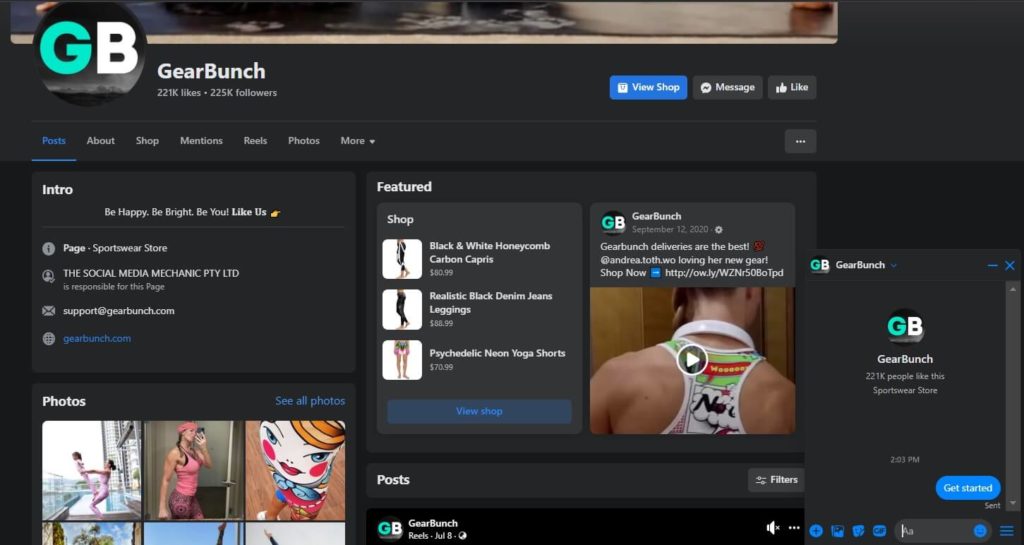
3. Chatbots in Customer service
One of the best use cases of chatbots is how effective they are in customer service. Businesses are increasingly using chatbots to automate their customer service function, since they provide quick and accurate responses.
Building a customer service chatbot is easy, and chatbots have access to troves of customer data, making them the best customer support agents.
Example: uParcel is a big player in the logistics industry in Singapore. They were getting a lot of repetitive query, and needed a lightning fast response system. This was because uParcel was competing with the likes of UPS and Forex, who were providing stellar customer support. uParcel decided to team up with Kommunicate, and Kommunicate’s chatbots handled more than 83,000 conversations for uParcel. Read the full story here.
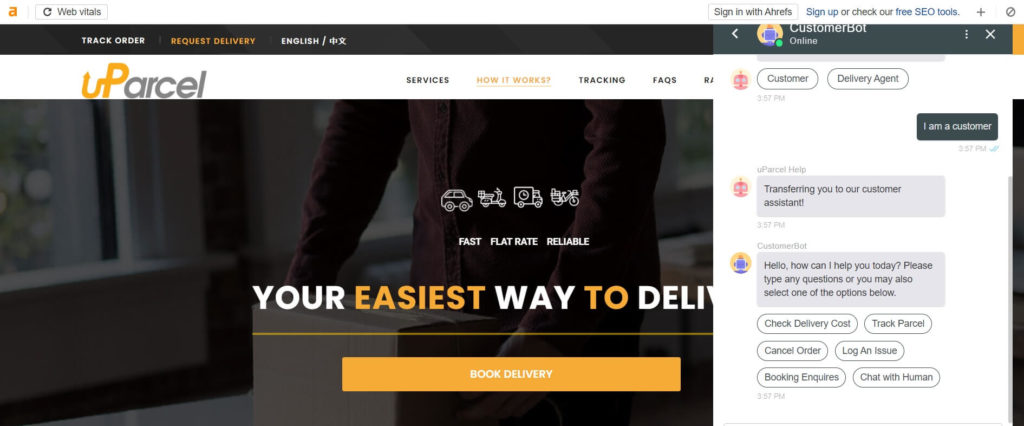
As you can see, chatbots today can play a vital role in all the aspects of running a business, be it marketing, sales or customer service.
Chatbots help improve customer satisfaction, and customers will gravitate towards a brand that understands them. Better customer retention, better loyalty and, in the end, increased revenue, are all direct benefits of having a chatbot.
So we now know that chatbots are a crucial part of your business, and also how they can have an impact on your bottom line.
Now, the next question is, how advanced are the chatbots?
The world has been asking this question for quite some time now, and the answer to it was given on a cold winter day last year.
ChatGPT.
Capabilities, and Pitfalls of ChatGPT
ChatGPT is on everyone’s lips these days, and with good reason.
Imagine having an assistant that can write you entire blog posts or code entire websites for you, within a matter of minutes. That too at a fraction of the cost that you pay a human assistant.
ChatGPT is all that and much more. The implications of this chatbot are far reaching, and we have only scratched the surface on what this tool can do.
But is it all hunky dory when it comes to using ChatGPT?
Paul Buccheit, who invented Gmail, had already tweeted when ChatGPT was launched that the chatbot has the power to make Google Search obsolete within a couple of years.
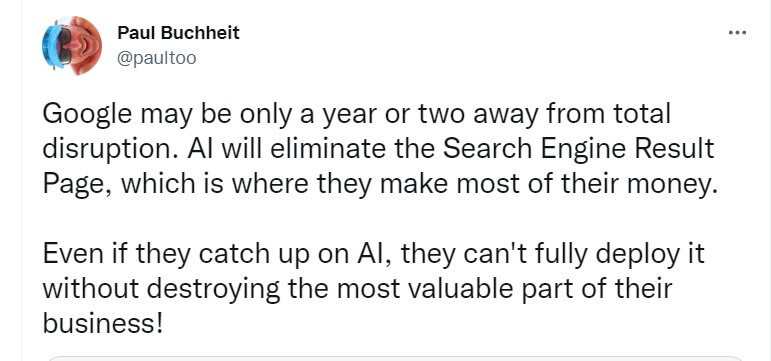
And then there is the case of ChatGPT “hallucinating.”
A hallucination in a large language model (LLM) refers to mistakes which creep into the text generated by them, which are semantically and syntactically plausible but are, in fact, non- sensical.
The Internet is full of instances where ChatGPT hallucinates. Different people who have tested the chatbot claim that the hallucination rate varies from 15% to 20% of all the responses.
For instance, check out this hallucination, which was the response to a prompt originally constructed by Douglas Hofstadter and David Bender. They ask ChatGPT the fastest that anyone has crossed the English channel on foot.
And the response was this:

So we know that ChatGPT is not perfect. But it’s getting there.
In fact, according to Bill Gates, ChatGPT could be teaching elementary school children reading and writing in as little as eighteen months.
So how can you use this amazing breakthrough in technology to your advantage?
Let’s explore:
How using company data to train ChatGPT is significant
So you have a treasure trove of information right at your fingertips, and we are not talking about Google.
ChatGPT is “Google on Steroids,” if we may.
It gives you very specific information, instead of, say, 10 different SEO optimized drab articles that are all stuffed with the same keyword to increase visibility.
For instance, if we asked Google the best way to celebrate a summer in Spain, the results will look something like this:
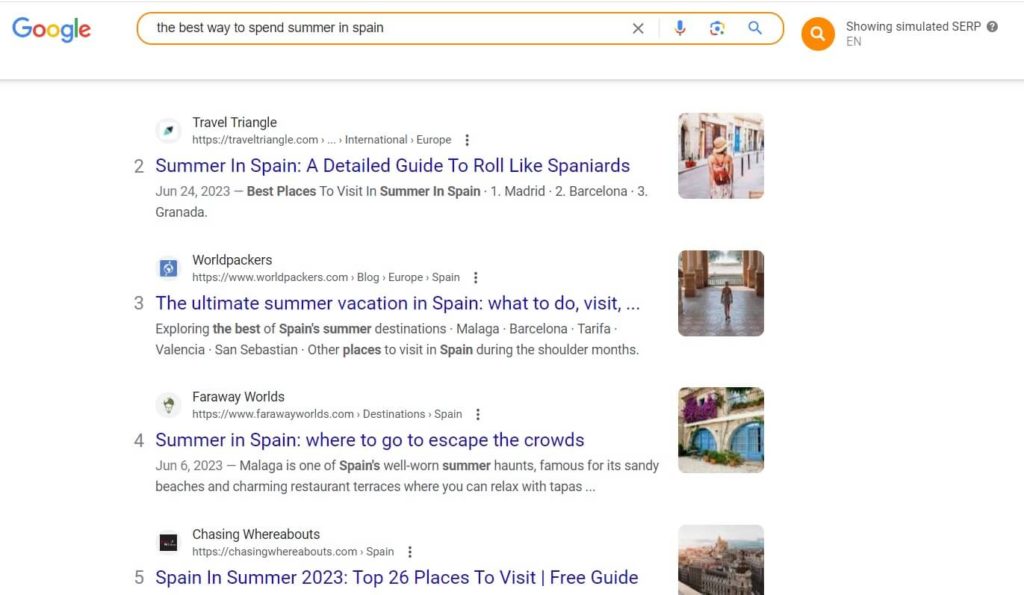
Ask ChatGPT the same question, and the results are quite varied.
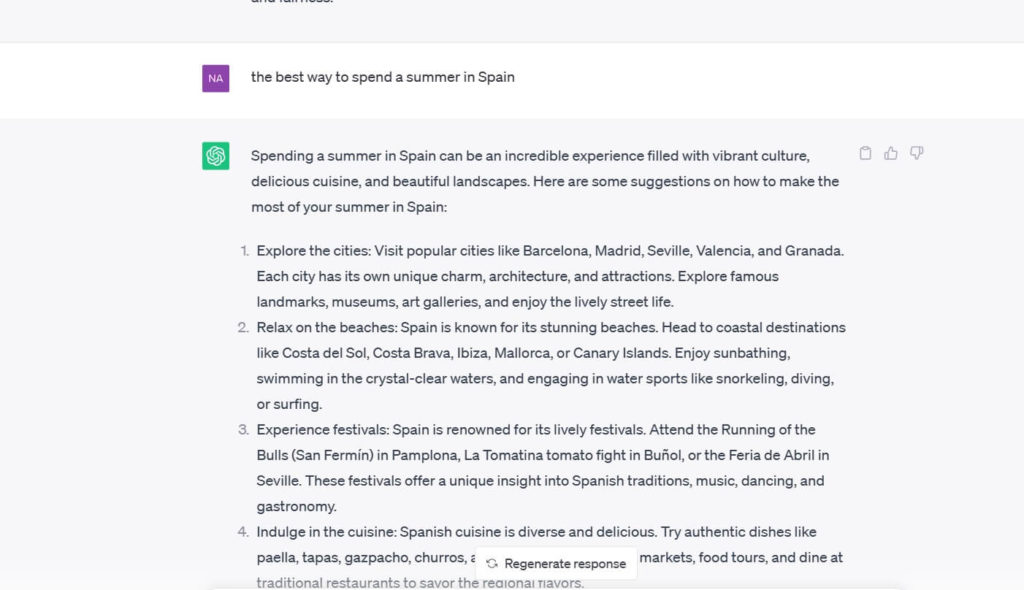
Everything that Google offers, but a lot more specific with actionable insights.
Now, to take things to another level, consider feeding different prompts into the tool, like say, your company’s brand guidelines.
You can then ask ChatGPT to write the copy for your website’s homepage, with H1, H2 tags separated, if necessary.
We asked ChatGPT to write the website copy of a pet food store in the Bay Area, and the results have been impressive, to say the least.
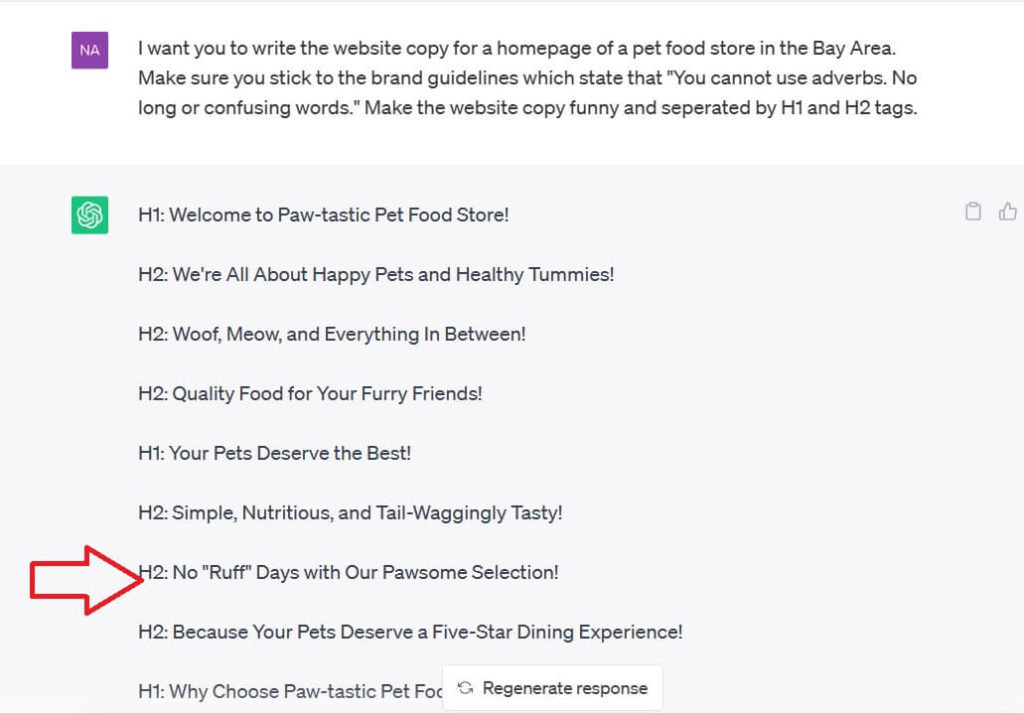
The LLM generated texts such as “No ‘Ruff’ Days with our Pawsome selection,” “Because your pet’s happiness is our top ‘Purr-iority.”
Remember, we asked ChatGPT to be a bit funny, so the crude humor was part of the exercise.
Engineers who can use ChatGPT to get the job done faster are in high demand in the Silicon Valley, with this Firstpost report saying they can claim up to $335,000 a year.
Training ChatGPT on company data can be significant for reasons such as:
1. Domain specific knowledge
Company data encompasses valuable information which is very specific to a business, industry or domain. Train ChatGPT on this data, and you are priming it to understand relevant terminology, concepts and context. When you then discuss topics related to the company’s operations, ChatGPT will give you more accurate responses.
2. Compliance and security
Fields such as medical, legal and finance have strict regulatory frameworks in place and place a lot of importance on data security. By training ChatGPT on company data, you can ensure that you comply with the data regulations. It also makes sure you are not exposing this sensitive data to a third party.
3. Behavior is customized
When you train ChatGPT on company data, you can tailor it to reflect a company’s tone, brand and values. Thus, while responding to a customer query, ChatGPT can maintain consistency in its communication style. This ensures that customer experience remains the same throughout multiple touch points.
4. Improved Accuracy
When you train ChatGPT on company data, you are more likely to get accurate responses that are specific to the company’s products or services. Users will be more than happy to interact with a bot which knows what it is talking about.

Let us now take a look at a few companies that have used ChatGPT to fine tune their company data:
1. BloombergGPT
Bloomberg is an American Software, media and finance company that recently made the news when it launched BloombergGPT. The chatbot was designed to answer finance- specific questions.
Bloomberg put in great efforts to train the chatbot, with the data scientists employing 700 billion tokens, 50 billion parameters and over 1.3 million hours of graphical processing unit time.
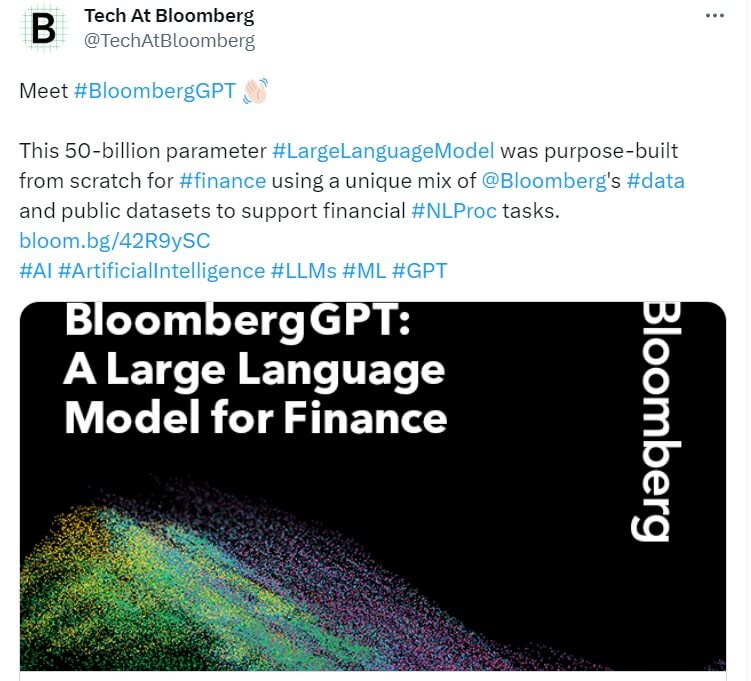
BloombergGPT plans to enhance the NLP capabilities such as sentiment analysis and news classification.
Bloomberg data scientists are already using BloombergGPT to produce “silver data,” which is a fancy term given to data that is used to train other AI models.
Unlike ChatGPT, however, BloombergGPT does not have a public-facing chat interface. Instead, people wishing to use the technology will have to login to the Bloomberg terminal.
2. Morningstar
Morningstar is another American company that specializes in investment research. It is using a technique called ‘prompt tuning’ to customize the contents of an LLM. With ‘prompt tuning,’ the original content is kept frozen, and is modified through prompts that have domain-specific knowledge.
Morningstar incorporated its Mo research tool into generative AI powered by OpenAI. The company then trained the system with over 10,000 pieces of Morningstar research. The company’s CEO, Kunal Kapoor, in a keynote speech, also demonstrated how this technology was further enhanced by attaching Mo to a digital avatar.
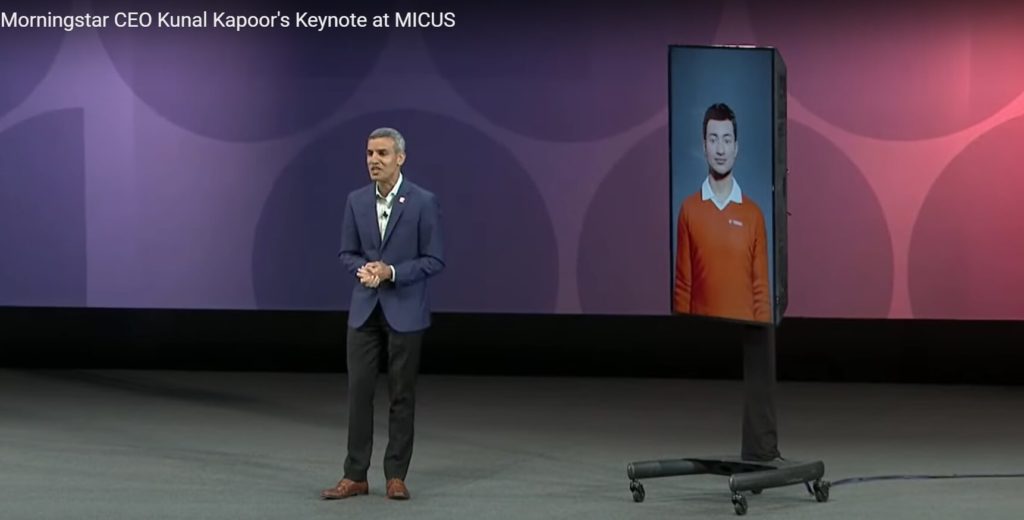
After a month of work, Morningstar opened up Mo so that financial advisors and independent investment advisors could use it. In its first month of use, Mo answered an impressive 25,000 questions at an average cost of $0.002 per question.
As you can see, companies are using ChatGPT to enhance their operations, and training the LLM is the only challenge that large organizations have.
So what does your company or brand have to do with it? A lot, as we are going to explain in this next section.
Why should you keep your brand messaging consistent?
By now, you know how important it is to keep your brand aligned to customer expectations. So why is keeping brand messaging so important?
Here are the top 3 reasons:
1. Clear communication
When you keep your brand messaging consistent, you are making sure that the intended message is reaching your target audience. This eliminates confusion and reduces misunderstandings. Customers know what they are getting themselves into.
Apple’s marketing strategy is built on consistency. Whenever we see the Apple logo, our minds automatically go to great electronic products that are simple to use and exude class.
And Apple makes sure to communicate with the customers on what they can expect when they part with their dollars.

2. Differentiation
When you keep your brand messaging consistent, customers will quickly identify your brand as the one that is going to solve a problem unique to them. Consistent messaging helps you highlight your USP and generate more sales. Customers will know what sets your brand apart and why they should choose your brand over that of a competitor.
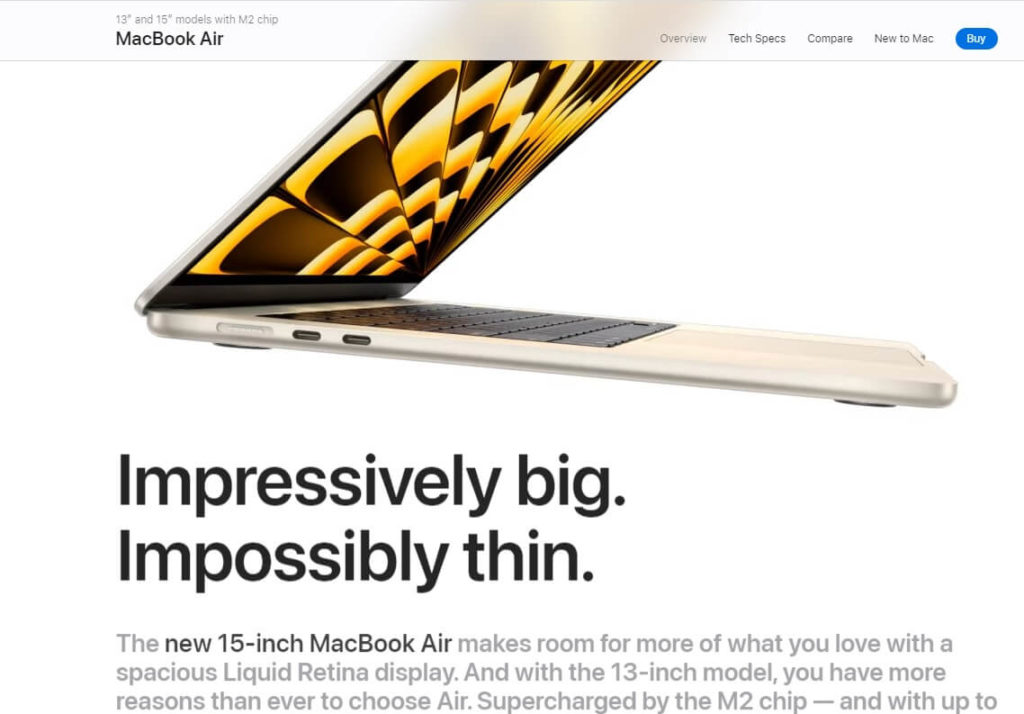
See how Apple uses simple copywriting techniques to convey how their new laptop is different from those of the competitors.
It is small details like these that sets Apple apart.
3. Long term brand building
A consistency in brand messaging ensures that you have a strong brand identity, building a strong brand image in the minds of a customer over the long run. It supports the growth of the product as a whole and contributes to brand equity.
So all in all, making brand messaging consistent is of the utmost importance if you want to grab a place in the customer’s heart.
Now, taking this to the next logical step – How can you train ChatGPT so that it reflects your brand’s tone and values?
Let us take a look.
How to train ChatGPT so that it reflects your brand’s voice?
Training ChatGPT need not be as scary as you think, and it only requires some fundamental “prompt engineering”.” If you are deeply familiar with your product, these steps will not be difficult.
Step 1: Define your brand’s attributes
This can be anything from friendly, authoritative or professional. As we have explained earlier, consider your brand’s vision and mission statement and also your target audience while defining this.
Step 2: Train with examples
This step involves preparing a dataset that aligns with your brand’s attributes defined in Step 1. You must include a good variety of prompts and responses that showcase your desired voice, style and messaging.
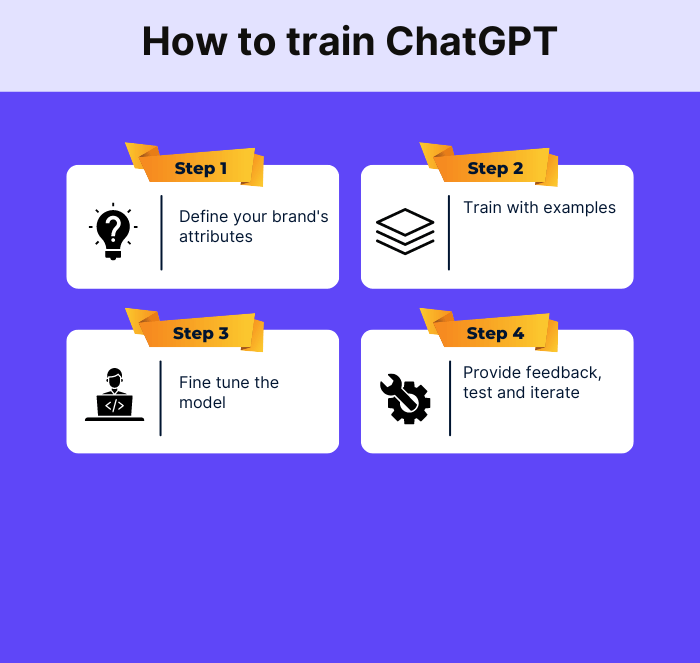
Step 3: Fine tune the model
Here, you need to use the transfer learning techniques to fine- tune the ChatGPT model with your brand-specific dataset. You must make sure that you keep the pre-trained knowledge intact.
Step 4: Provide feedback, test and iterate
Continuously use the model and give it feedback, so that the responses better align with your brand identity. Adjust the training examples and keep fine-tuning it to improve the model’s accuracy. As a final step, collect data from real world users by encouraging them to use it.
Challenges involved
We have seen how providing personalized interactions and aligning your brand messaging so that it matches that of your customer is important.
We have also seen how chatbots, and ChatGPT in particular, can be used to achieve this.
But there are a few challenges that may hamper your personalization attempts.
Here are some of them:
1. Data privacy and security
Many of the firms implementing ChatGPT today deal with a lot of sensitive information. Ensuring that this information is secure, and that it follows the compliance regulations of the region must be at the top of your head when implementing this technology. This may involve regulations such as the California Customer Privacy Act (CCPA), General Data Protection Regulation (GDPR), or, if dealing with medical data, HIPAA and SOC2.
2. Balancing personalization with what customers expect
There is a fine balance between providing a personalized experience and creating something that your customers feel is a tad too intrusive. As a responsible business, you should carefully tread this line. Create a personalized experience, but make sure that you are not overstepping any boundaries and making the customers feel uncomfortable.
3. Maintaining consistency across channels
Maintaining the same consistent brand approach across multiple channels is one of the most difficult challenges you will face as a business. Be it social media, website, or mobile app, customers must feel they are speaking to a distinct business that actually cares for them. Ensuring a seamless integration between different touch points and aligning them with a brand’s tone, voice and values is the most crucial, yet difficult step of the process.
The Future of Implementing ChatGPT
As ChatGPT continues to evolve, it gets even more exciting to see where engineers around the world are taking large language models to. ChatGPT will open up new possibilities for businesses and organizations to improve their operations and interact with their customers.
Some of the future opportunities include:
- Improvements in product development: Using ChatGPT to gather customer feedback and insights, companies can iterate faster and improve their products and services.
- Easier decision making: ChatGPT’s strength lies in its ability to analyze data and make accurate predictions, which will help businesses make better decisions.
- Personalization in customer service: Every customer is different, and ChatGPT can be used to provide an experience that is tailored to each customer’s needs.
ChatGPT can also be used to create interactive and engaging educational content, and also to provide healthcare services like triaging patients.
The future looks bright for ChatGPT, as it heralds the dawn of a new era in computing. While conspiracy theorists will cry from rooftops that ChatGPT will destroy the world, we would like to think otherwise.
ChatGPT is a piece of technology that will enhance the productivity of all knowledge workers, and, eventually, make the world a better place.

CEO & Co-Founder of Kommunicate, with 15+ years of experience in building exceptional AI and chat-based products. Believes the future is human + bot working together and complementing each other.
At Kommunicate, we envision a world-beating customer support solution to empower the new era of customer support. We would love to have you on board to have a first-hand experience of Kommunicate. You can signup here and start delighting your customers right away.


